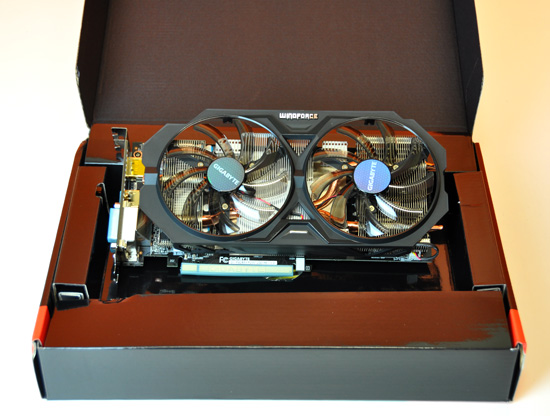Not being released to retail until next week, Evatech has got its hands on AMDs brand new 28nm Tonga XT GPU this afternoon and is bringing you what might be a world first, hands on with the R9 285!
So without further ado, lets get to it. Keep in mind we are not professional reviewers, just enthusiasts who got a new toy early, so we apologize in advance for the limited amount of testing & details.
UPDATE : BENCHMARK RESULTS ADDED – 02/09 12:05pm
UPDATE : [Correction] R9 285 not R9 285x
UNBOXING
Expected to have a street price around the $350 AUD mark at launch it comes with everything you would expect in a mid range gaming video card. The Gigabyte R9 285 Windforce 2 OC [GV-R9285WF2OC-2GD] requires 2x6pin power connectors, packs 2GB of GDDR5 memory, sports 2 DVI ports, 1 HDMI port and 1 Display Port input. It also supports DirectX 11.2, OpenGL 4.4 and Shader Model 5.0.
THE RIG
To put it through its paces we paired with 16GB of DDR3 memory and an i7 4790 Haswell CPU on a GA-H97M-D3H Motherboard with a 700W Cooler Master Thunder PSU to power it. To hold it all together we chose the Corsair 350D, and the ambient room temperature was 21c (70f).
TEMPERATURES & OVERCLOCKING
With temperature issues plaguing the early R9 series cards, the first test we did once our system was all ready; set up FurMark. For those not familiar with FurMark, it is an OpenGL powered stress test specifically designed to run the GPU at 100% processing capacity in an effort to overheat it. It’s a great way to see how hot these GPUs will actually get, and exactly how much that temperature effects the performance.
Core Clock 973MHz / Memory 5500MHz : Stable 65c [STOCK SPEEDS] 53% Fan Speed
Core Clock 1003MHz / Memory 5620MHz : Stable 65c / 57% Fan Speed
Core Clock 1073 / Memory 6000MHz : Stable 65c / 61% Fan Speed
Core Clock 1073MHz / Memory 6300MHz : Crashed after 90 seconds 65c / 62% Fan Speed
With the auto tuned Windforce 2 fans barely getting above 60%, this Gigabyte cooler was more than capable of holding the GPU to a save 65c as we cranked up the clocks. Even when we cranked it a little too high, the stability issues were evidently not heat related at all.
BENCHMARKING RESULTS
Next up, Unigine Heaven. Also designed to push GPUs to their limit, this benchmark is Direct X11 powered and is often used by our technicians to stress test customers PCs before shipping them out. Being a DirectX 11 benchmark, it’s also a great indicator of gaming performance you can expect, relative to other GPUs.
Unigine Heaven settings were as follows for all of the below benchmarks, running on Windows 7 64bit Home Premium and the Drivers provided on the disc within the retail box.
| Render: |
direct3d11
|
| Mode: |
1920×1080 fullscreen
|
| Shaders: |
high
|
| Textures: |
high
|
| Filter: |
trilinear
|
| Anisotropy: |
4x
|
| Occlusion: |
enabled
|
| Refraction: |
enabled
|
| Volumetric: |
enabled
|
| Tessellation: |
normal
|
The overclocking was achieved using Gigabyte’s own OC Guru software that is provided on the driver discs in the retail package. The card we had on hand to pitch the R9 285 against was the Gigabyte GTX770 OC, with a very similar Windforce cooler. Retailing between $450 and $500 the 4GB edition of this GTX770 is a steep $100AUD more than the expected price of the 285 but the 2GB model is closer to the $400AUD mark if you shop around which makes it only around $50 more.
CONCLUSION
A lot more testing is required but early signs make the the R9 285 look like it will be nestled competitively between the GTX760 and GTX770 in terms of price and performance making it a very viable option at $350aud on launch. It will also be a card worth watching as prices come down leading in to the holiday season.
According to local distributors the release date of this card is the 6th (a Sunday?) so we can expect it to start showing up in stores Monday.



